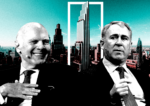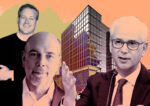Trending
Reimagining shopping malls
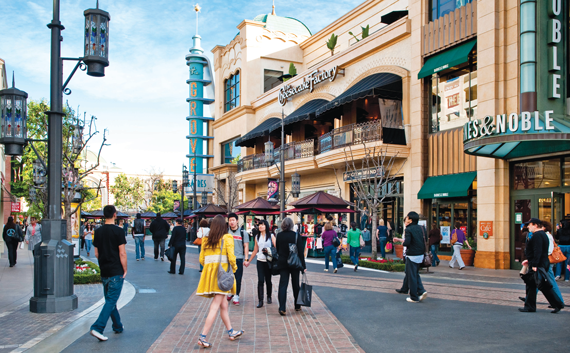
When The Grove opened in 2002, it was a breath of fresh air for Southern California shoppers — literally. After years of grand openings for enclosed, suburban-style malls, here was an open-air shopping center reminiscent of a theme park, with trolley service, trendy restaurants and a movie theater.
Flash forward nearly 15 years, and a host of mall owners are scrambling to revitalize their L.A. properties by tearing off rooftops and adding attractions and amenities. They’re counting on entertainment and social experiences to draw in customers for high-end retailers and justify the soaring lease rates.
“The suburban-style mall had a great run, but people are just not shopping that way anymore,” said retail analyst Peter Lynch of Los Angeles-based A&G Realty Partners.
Lynch said that shopping malls are becoming integrated with mixed-use complexes, and he expects that trend to continue over the next decade. “The most successful will be those that are extraordinarily sophisticated and ready to spend capital to build an omnichannel experience for the customer,” he said.
The Grove — with sales of $2,200 per square foot, making it the second-most-productive U.S. shopping center, according to Green Street Advisors — has played up the experiential theme. The mall offers hotel-style concierge services to guests, such as making arrangements for birthday parties, reserving tables at restaurants and securing private trolley rides.
“We’re constantly looking for ways to innovate and provide additional services and amenities for our guests,” said Jack Levy, the executive vice president of operations for the mall’s owner, Los Angeles-based Caruso Affiliated. “One of the ways we have adapted is by having pop-up shops at The Grove.”
 The Grove has hosted pop-up shops by actress and organic-product maven Jessica Alba, who opened Honest Beauty, and actress and fashion designer Nicole Richie, who showcased her House of Harlow fashion line. The celebrity fashion designer Rachel Zoe’s first brick-and-mortar pop-up shop made its appearance here. The shopping center has also been home to first-to-market retail concepts, such as Elizabeth and James, which is Mary-Kate and Ashley Olsen’s first dedicated store for purchasing their fashion line.
The Grove has hosted pop-up shops by actress and organic-product maven Jessica Alba, who opened Honest Beauty, and actress and fashion designer Nicole Richie, who showcased her House of Harlow fashion line. The celebrity fashion designer Rachel Zoe’s first brick-and-mortar pop-up shop made its appearance here. The shopping center has also been home to first-to-market retail concepts, such as Elizabeth and James, which is Mary-Kate and Ashley Olsen’s first dedicated store for purchasing their fashion line.
Experts say that some of L.A.’s tired suburban malls are undergoing pricey makeovers to try to keep up with contemporary concepts like The Grove as well as with the nearby The Americana at Brand, a similar property that Caruso opened in 2008.
In fact, mall owners are opening their wallets for major building nationwide. The value of shopping-center construction, including work on new and existing structures, reached nearly $17.2 billion in 2015, according to the U.S. Census Bureau — the highest level since the end of the last economic cycle in 2008.
Occupancy rates have held steady at around 94 percent over the last two years. Net operating income increased 2.6 percent in the first half of 2016 compared with the same period a year earlier, while base rents rose 2.6 percent over the same time frame, according to the International Council of Shopping Centers.
Here’s a bird’s-eye view of sevveral high-end mall renovations that are either under construction or ready to break ground in L.A.
Promenade at Howard Hughes Center
The neighborhood has certainly changed since the 250,000-square-foot Promenade at Howard Hughes Center opened in 2000. At 6081 Center Drive, on land that was once owned by aviation and business mogul Howard Hughes, it sits at the periphery of Silicon Beach.
The mall owners say the burgeoning demand for office space in nearby Playa Vista — where Google and Yahoo have set up shop — makes this a promising time to redevelop the shopping center. “We’ll capture a good part of that momentum,” said Philip Cyburt, CEO of Laurus, the Los Angeles real estate investment firm behind the Promenade’s reinvention.
Laurus purchased the mall from Irvine-based Passco in June 2015 and plans to invest $30 million in the two-level, mixed-use center that has thus far “not been able to get any momentum through its life cycle,” Cyburt said.
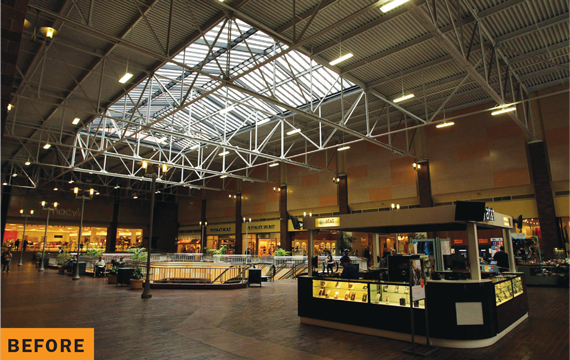
The Bloc, a DTLA mall, before the roof as part of a $180 million redesign.
The design, by the L.A.-based Jerde Partnership, will include pedestrian-friendly access via a new crossing on Center Drive and an update to tired Art Deco retail façades, as well as a new courtyard with an outdoor movie-screening area and fire pit. Interior changes include reconstructed retail spaces that will sport smaller footprints and shorter bay depths. The result will be an increase in the number of leasable tenant spaces.
Construction is expected to begin in October, when the second floor of the southeast portion of the mall will be removed to create an open-air space with multiple entry points. The project is slated for completion in the second quarter of 2017.
Westfield Century City
Mall owner Westfield plans to keep its Westfield Century City, located at 10250 Santa Monica Boulevard, partially open during its $800 million redevelopment.
The vast undertaking, which is projected to get under way by the end of 2016, involves tearing down three-fourths of the mall. Redevelopment plans include a renovated 1.2-million-square-foot shopping center, eight acres of new outdoor public space, additional parking and 70 more shops.
Celebrity chef Mario Batali has taken a 50,000-square-foot space for his food-emporium concept Eataly, which has existing stores in New York and Chicago and expansion plans for Boston as well as Los Angeles and beyond.
At least one tenant wasn’t pleased about the addition of the New York-based Eataly. Gelson’s Markets, a Southern California grocery chain that has been a mall tenant since 1967, disputed the addition with Westfield, saying it violated the company’s lease agreement. A spokesperson for Gelson’s said on Aug. 31 that it had reached an agreement with Westfield. The mall owner declined to comment.
Despite the lawsuit, Lynch, the retail analyst, said the Batali venture is a good get for Westfield. “Eataly is a home run,” Lynch said. He also said that today’s shoppers want to have “restaurant and entertainment experiences that are unusual, and that includes all kinds of dining experiences.”
Fashion is another key element of the planned renovation, with the center adding retailers like Nordstrom, which plans to move from Westside Pavilion.
“Westfield Century City will elevate fashion retail to a new level of excellence, combining the most sought-after brands and exceptional customer amenities,” Peter Lowy, co-CEO of Westfield, which also operates the Westfield World Trade Center in New York, told The Real Deal through a spokesperson.
Westside Pavilion
Speculation is rife about how Macerich, a Santa Monica-based real estate investment trust, may redevelop the Westside Pavilion, which is on the verge of losing its anchor tenant. The 755,000-square-foot mall, located at 10800 West Pico Boulevard, dates to 1985. In recent years, the mall’s owners have discussed some ideas with local community groups but haven’t announced definite redevelopment plans.
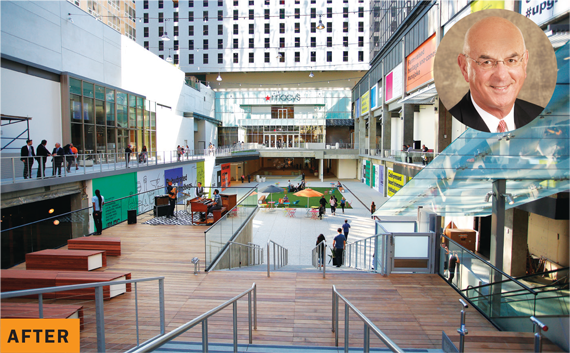
The Bloc, a DTLA mall, after. Inset below: developer Wayne Ratkovich
Bob Aptaker, vice president for development at Macerich, met with a homeowners’ association near the mall in late 2015 to discuss some possibilities, such as replacing at least part of the mall’s fortress-like walls to allow in more natural light, as well as opening up more easy pedestrian access from Pico Boulevard. Other potential plans included expanding an existing parking structure and converting part of the mall into creative office space.
In early 2017, the Westside Pavilion’s flagship store, Nordstrom, will decamp for new digs at Westfield Century City. Whole Foods is rumored to be interested in taking this space.
A representative for Macerich declined to comment for this article.
Beverly Center
In Beverly Grove, near Beverly Hills and West Hollywood, the 886,000-square-foot Beverly Center, located at 8500 Beverly Boulevard, is in the midst of a $500 million makeover.
Mall owner Taubman Centers, the Bloomfield Hills, Michigan-based global retail real estate company, has hired architecture firm Studio Fuksas of Rome, Italy. Studio Fuksas has designed a number of high-profile international projects, including Shenzhen Bao’an International Airport in Guangdong, China, and the new National Archives of France in Pierrefitte-sur-Seine.
The renovation is slated for completion in 2018. Plans include a series of interior skylights, a perforated steel façade and an updated streetscape with drought-resistant greenery. Inside, a center courtyard with a 20-by-35-foot LED screen will serve as an informal gathering place as well as an event and exhibition space.
Anchor tenants Bloomingdale’s and Macy’s are expected to remain, with the new tenants including Apple, Burberry, Jimmy Choo, Prada, Salvatore Ferragamo, Tiffany & Co., Traffic, Uniqlo and Versace.
“Brands are rediscovering that they can only connect emotionally with customers in a brick-and-mortar environment. In our case, the environment needs to evolve into a retail, dining and gathering space that reflects the lifestyles, personality and interests of the Los Angeles community,” William Taubman, the chief operating officer of Taubman Centers, said in an interview with TRD.
The Beverly Center plans include a series of street-level restaurants that open to pedestrian traffic off of West 3rd Street, and a gourmet food hall, called The Street, on the eighth-floor terrace. Operated by James Beard Award-winning Chef Michael Mina, the food-court concept will include cuisine from around the world sold in an outdoor bazaar-style setting.
The Bloc
The Bloc, the only one of these redevelopment projects located in DTLA, is a 1.1-million-square-foot, $180 million redevelopment project built by Los Angeles developer Ratkovich in partnership with National Real Estate Advisors and Blue Vista Capital.
The developer bought the former Macy’s Plaza — a retail, office and hotel complex — in June 2013 for $241 million. In early 2014, the company removed the mall’s roof for an open-air food court and 150,000 square feet of retail space. In April, Ratkovich obtained a $225 million loan to refinance The Bloc. The development opened to the public at 700 South Flower Street in June with the unveiling of The Square, a plaza-level public space.
Ratkovich executives say that retailers are in the process of building out individual storefronts; however, the retail portion of this project has been delayed, and some market pros suspect that not all of the retailers who have been announced will move in.



